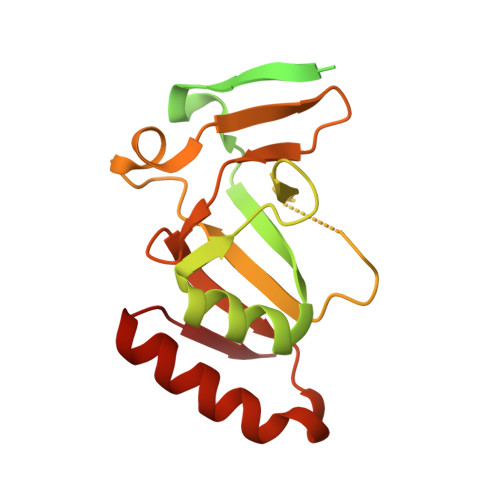Structural and biochemical insights into the molecular mechanism of TRPT1 for nucleic acid ADP-ribosylation.
Yang, X., Wang, J., Li, S., Li, X., Gong, J., Yan, Z., Zhou, H., Wu, C., Liu, X.(2023) Nucleic Acids Res 51: 7649-7665
- PubMed: 37334830
- DOI: https://doi.org/10.1093/nar/gkad525
- Primary Citation of Related Structures:
7YW2, 7YW3, 7YW4 - PubMed Abstract:
Nucleic acid ADP-ribosylation has been established as a novel modification found in a wide diversity of prokaryotic and eukaryotic organisms. tRNA 2'-phosphotransferase 1 (TRPT1/TPT1/KptA) possesses ADP-ribosyltransferase (ART) activity and is able to ADP-ribosylate nucleic acids. However, the underlying molecular mechanism remains elusive. Here, we determined crystal structures of TRPT1s in complex with NAD+ from Homo sapiens, Mus musculus and Saccharomyces cerevisiae. Our results revealed that the eukaryotic TRPT1s adopt common mechanisms for both NAD+ and nucleic acid substrate binding. The conserved SGR motif induces a significant conformational change in the donor loop upon NAD+ binding to facilitate the catalytic reaction of ART. Moreover, the nucleic acid-binding residue redundancy provides structural flexibility to accommodate different nucleic acid substrates. Mutational assays revealed that TRPT1s employ different catalytic and nucleic acid-binding residues to perform nucleic acid ADP-ribosylation and RNA 2'-phosphotransferase activities. Finally, cellular assays revealed that the mammalian TRPT1 is able to promote endocervical HeLa cell survival and proliferation. Together, our results provide structural and biochemical insights into the molecular mechanism of TRPT1 for nucleic acid ADP-ribosylation.
Organizational Affiliation:
College of Life Sciences, Hebei Innovation Center for Bioengineering and Biotechnology, Institute of Life Sciences and Green Development, Hebei University, Baoding 071002, Hebei, China.
















